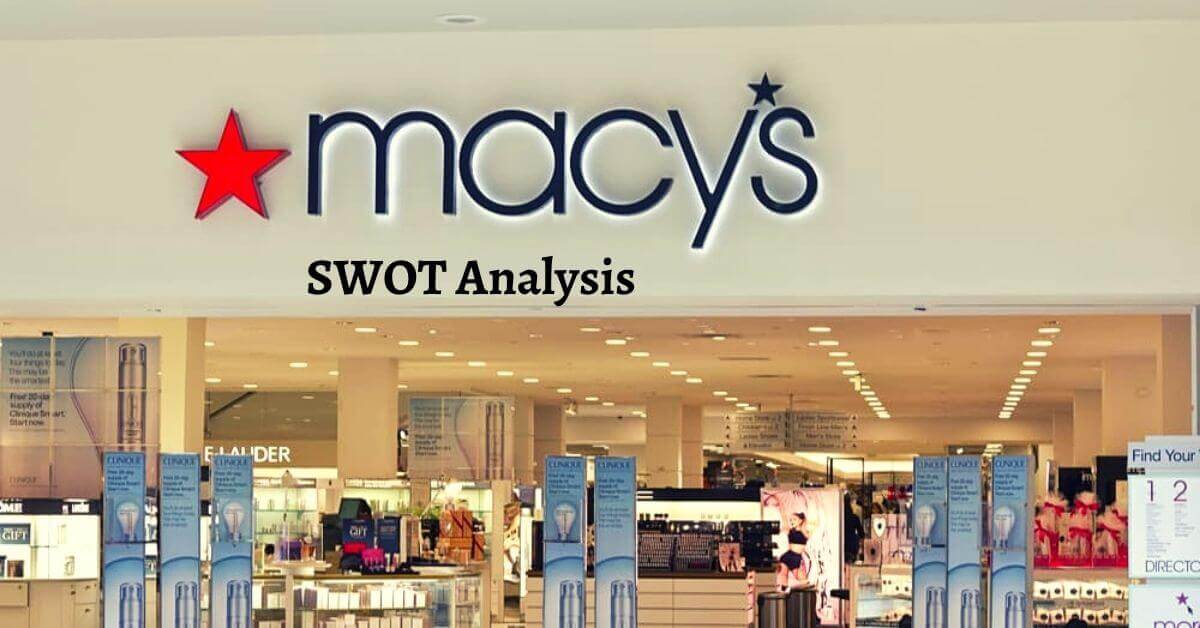Swot analysis of Sainsbury’s. J Sainsbury plc or Sainsbury’s is one of the leading supermarkets in the UK. John James Sainsbury was the founder of the Sainsbury brand, and he laid the foundation of the company in 1869. The headquarter of the company is in London, England, UK.
Sainsbury’s has divided the company’s operations into three main categories; Sainsbury’s Argos, Sainsbury’s Bank, and Sainsbury’s Supermarkets. Brands like Argos, TU, Nectar, and Habitat operate under the umbrella of Sainsbury’s.
Sainsbury’s main products and services are;
- Forecourt shop,
- Convenience shop,
- Supermarket,
- Superstore,
- Hypermarket,
- Food,
- Snacks,
- Confectionaries,
- Soft drinks,
- Magazines,
- Over-the-counter drugs,
- Tobacco, and many others.
According to an estimate, the annual revenue of Sainsbury in 2022 was 42.831 billion dollars, and it has increased by 7.44%. Out of which, the net income of 0.925 billion dollars, and has declined by 325.41%. However, the supermarket brand has employed more than 171,000 employees to manage its daily operations.
Sainsbury’s top competitors are;
- Waitrose,
- Amazon,
- Debenhams,
- ALDI,
- Walmart,
- Morrison’s,
- Boots,
- Tesco,
- ASDA,
- Alibaba,
- H&M,
- Macy’s,
- Target.
Today, we’ll discuss the swot analysis of Sainsbury’s. It’s going to focus on the internal and external factors impacting one of the largest supermarkets in the UK. Here’s the swot analysis of Sainsbury’s as follows;
Strengths of Sainsbury’s
Sponsorships
Sainsbury’s has sponsored many events of the Paralympics. Along with sponsoring the whole event, the chain brand has hired many influencers and celebrities like David Beckham, Ellie Simmonds, and Jamie Oliver as Sainsbury’s ambassadors. When those influencers represent a certain brand, their fans would start buying the products of the company.
Listed Company
Sainsbury’s is a listed company under the constituents of the London Stock Exchange and FTSE 100 Index. Being a listed company means that the public could easily and freely trade the stock and shares of the company in the stock exchange.
Own-label Products
According to an estimate, Sainsbury offers approximately more than 30,000 lines of products in different categories. Out of which the company sells 20% of the products under its own label. The openness in the stock market earns the trust of investors.
Wide Network
Sainsbury’s has a strong network of more than 800 convenience stores and 600 supermarkets across the UK. The easy-to-ordinary customers provide the company with a unique edge over competitors in the British market. That’s why the chain store company is the 3rd largest supermarket in the UK.
Excellent Marketing
Sainsbury’s uses various channels like online, digital, and social media platforms (Facebook, YouTube, Twitter, LinkedIn, Instagram), print media, TV ads, and others for the marketing and promotion of its products and services. Along with marketing and promotions, Sainsbury has been offering Nectar loyalty cards to customers since 2002; it allows customers to earn points for every pound they spend.
Strong Leadership
Sainsbury’s has strong leadership Lord Sainsbury is the president of the company, Simon Roberts is the CEO, and Martin Scicluna is the chairman. All of these gentlemen are well-experienced, and they’re playing an excellent management roles.
Brand Value
According to an estimate by Forbes, the market capitalization of Sainsbury’s in 2021 is 5.5 billion dollars. The chain supermarket ranked at the 1058th position of the Global 2000 companies in 2020. However, the company ranked at the 212th position of the World’s Top Regarded Companies in 2017.
Weaknesses of Sainsbury’s
Competition
Sainsbury’s offers a variety of products in various categories, and the company is facing various competitors in different categories that are niche-focused. The niche-focused competitors are attracting a major share of the customer market.
Increasing Prices
The international political issues have caused an atmosphere of economic uncertainty and a shortage of supplies. It leads to an increment in cost, and the company had no choice but to increase the prices. Resultantly, the sale of the company’s products dropped to a great extent.
Opportunities available to Sainsbury’s
Developing Countries
As we know that Sainsbury’s has established a very large network in the UK. Now, the company should expand its business in African and Asian countries. They’re the world’s largest consumer market with a full of potential and opportunities.
24 Hours Service
Sainsbury’s should introduce self-checkout automated technology. It would allow the company to serve customers 24 hours a day and 7 days a week. Most importantly, the automated machine would make the process efficient and increase the overall sale.
Mergers
Sainsbury’s merged with Tesco in 1995 and Tesco overpower the company’s operations. It helped Sainsbury’s to elevate its market position. However, the company should keep on merging with other brands; it would help the company to expand its customer market.
Threats Sainsbury has to face
Economic Crisis
The pandemic crisis and worldwide lockdown have shut down many of Sainsbury’s stores across the UK. That’s why the annual revenue and net income of the company have dropped by 3.2% and 32.78%. The period of economic recession started after the pandemic and it declined the buying power of ordinary people.
Globalization
Technological development has made the world a global village. Many businesses and companies are expanding their market and have become global multinational brands. The laws and regulations of different countries are different. Therefore, it presents a great opportunity and a great threat to the company in terms of expansion and legality.
Conclusion: Sainsbury’s Swot Analysis Example Company
After a careful study of the swot analysis of Sainsbury’s, we’ve concluded that Sainsbury’s is indeed the world’s leading chain supermarket company. The economic recession, competitors, and globalization are some of the main challenges to the company. Sainsbury’s should expand its market and adopt the latest technology in order to keep up with the competition; while keeping in mind the internal strengths weaknesses; external opportunities threats of chain supermarket swot analysis example company.

Ahsan Ali Shaw is an accomplished Business Writer, Analyst, and Public Speaker. Other than that, he’s a fun loving person.


